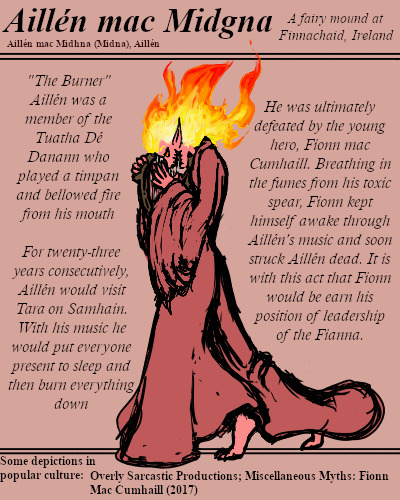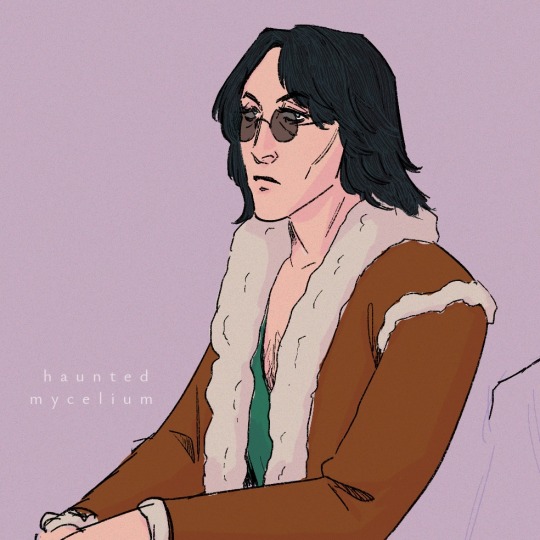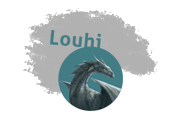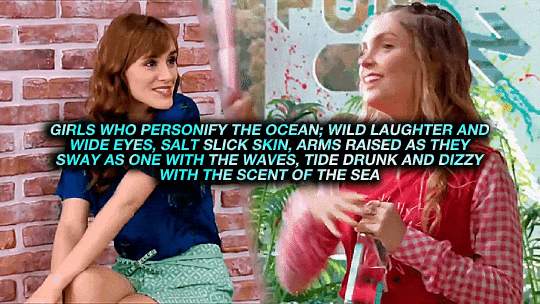#aillén
Text

The fire-breathing Aillén, a wicked musician of the Tuatha dé Danann who was the bane of Tara for 23 years.
#BriefBestiary#bestiary#digital art#fantasy#folklore#legend#myth#mythology#fairy#fae#faerie#tuatha dé danann#tuatha de danann#samhain#aillén#aillén mac midgna#aillén mac midhna#aillén mac midna#the burner#aillén the burner#fionn mac cumhaill#boyhood deeds of fionn mac cumhaill#tara#hill of tara#irish folklore#irish mythology#irish legend#monster
112 notes
·
View notes
Text


2 notes
·
View notes
Text




Aillén is older than Bia, Chiara & Celeste. She is 18 and they are 16.
@weirdthoughtsandideas @calyxthenerd @putonmyfavoriteshow @time-never-waits-for-me @assim-eu-sou
2 notes
·
View notes
Photo


Another fae character - Aillén
Directly based on and named after Aillén from the Boyhood Deeds of Fionn
#fae#fey#faerie#fairy#fair folk#seasonal courts#fae court#fae courts#aillen mac midna#summer court#my ocs#saccha art#my fae
15 notes
·
View notes
Text

Therapy is expensive but drawing Aillén (1000+ year old fae prince and convicted arsonist) in silly groovy clothes he wore in the sixties is free
0 notes
Text
Samhain Part 2 - Celtic Mythology: What Happened Then?

A lot of stories are connected with Samhain. Many legends tell about events that happened at or around that time. Since Samhain was a time to settle debts, conflicts and all that sort of things, it sounds quite natural that some of the key events of the Celtic world took place at that time. Often they are stories about gods or mythical folks. Here are two stories, probably the most well known, and a good first insight into Celtic myths. Beware if you are not familiar with the characters, you might end up like I did at the beginning of my research, learning a completely new language.
And be warned, those two stories are compilations of many sources, so the stories you might be familiar with may differ slightly.
Illustration: Balor’s grave - http://www.carrowkeel.com/sites/moytura/moytura2.html
Dramatis Personae
It is never clear, wherever you look, what the genealogy of those people are, unless clearly stated in tales. Therefore I will not try and suggest anything out of those lines.
Warning: I haven't put any illustrations here, because these are stories and you should make your own pictures.
Aillén Mag Midgna - called ‘the burner’, harassed Tara every Samhain until Fionn Mac Cumhaill killed him.
Balor of the Evil Eye - Fomorian king of the Hebrides, his eyelid must be lifted by four men to open, and when so, Balor’s gaze is deadly and can reduce an army to impotence. Granddad of Lug Lámfhota and killed by him in the second Battle of Mag Tuired.
Bres - son of Elatha of the Fomorie and Ériu of the Túatha Dé. Hateful king of the Túatha Dé, replaced Nuadu after the latter had his hand cut. His ungenerous and unkingly rule resulted in his being deposed as king, and his brooding over battle to regain his kingdom, which in turn resulted in the second Battle of Mag Tuired.
Elatha mac Delbaíth - Fomorian king, father of Bres.
Ériu - goddess of Ireland (Éire), mother of Bres. Ériu is one of the Túatha Dé.
Fionn Mac Cumhaill - main hero of the Fenian Cycle, liberator of Tara against Aillén Mac Midgna, one of the aos sídhe.
Lug Lámfhota - son of Eithne daughter of Balor of the Evil Eye, the Fomorian king of the Hebrides, and of Cian son of Dian Cécht, the Túatha Dé god of healing. Lug is therefore the grandson of Balor, and this is important. Lug is also called Lug Samildánach, meaning ‘master of all the arts’, because he indeed masters them all, as will come in handy when he wants to enter Tara.
Nuadu (Nuadu Airgetlám) - king of the Túatha Dé, who loses his hand during the first battle of Mag Tuired and is replaced by Bres, son of Elatha of the Fomoire.
Ogma - orator and warrior. One of the three main champions of the Túatha Dé. The Dagda’s brother.
The aos sídhe - barrow dwellers, people of the sídh, i.e. fairies. Sídh are funeral barrows that open at Samhain and let people walk from one world to the other.
The Dagda - the ‘good god’, leader of the Tátha Dé Danann. Ogma’s brother.
The Fir Bolg - aka the Men (fir) of Builgh, are the fourth of a series of six invaders of early Ireland according to Lebor Gabála Érenn. They were replaced by the Túatha Dé.
The Fomorie - Malevolent deities of early Ireland, constantly raiding and tricking against the inhabitants of Ireland, according to Lebor Gabála Érenn.
The Morrigan - the Irish goddess of war fury.
The Túatha Dé Danann - people of immortals, who precede the mortals in the pseudo-history of Ireland, Lebor Gabála Érenn. Their main foe are the Fomorie.
The Second (and final) Battle of Mag Tuired
The Second Battle of Mag Tuired (various spellings according to language) is said to have happened during Samhain. It is the final battle between the ‘Good god’ the Dagda, Lug, and their spiritual folk the Túatha Dé Danann, and the Fomoire. It is actually one of two texts that recount how the Túatha Dé Danann settled in Ireland and how they were taught agricultural basics by the Fomoire. It is a story of intercourse between men and women of both cultures, producing heroes who choose loyalties and fight each other. A story of oppression and freedom, of magic and war.
The Túatha Dé Danann had come to Ireland from the north, challenged the local people called the Fir Bolg (men of Builg), into either giving them Ireland or fighting. The Fir Bolg, who had been there only 37 years, chose to fight, and the Túatha Dé king Nuadu had his hand cut. The Túatha Dé were still winning, and a truce was called, but the Fir Bolg still chose to fight, and after a while they conceded victory, were allowed to keep a part of Ireland for themselves, and the Túatha Dé Danann settled in. That was the first battle of Mag Tuired.
The Túatha Dé Danann leader Nuadu couldn’t be their king anymore because of a rule set by the goddess Brigid, that no one can be king if their limbs are not complete. So another man, Bres, was chosen as king. Bres was the offspring of a union between a Túatha Dé Danann woman called Ériu and a Fomorian king called Elatha. The Fomorian are the malevolent people, the ones who raid and never settle. Bres, considering himself more loyal to the Fomorie, oppressed his fellow Túatha Dé Danann folk. He set the Dagda to build him a fort and Ogma to fetch wood! Probably even worse, king Bres was not generous. Eventually, the Túatha Dé rebelled, deposed Bres as king, and restored the no-longer crippled Nuadu. The latter had had a new hand made of silver for him by Dian Cecht, the god of physicians (not the only silver hand we know of, is it? Rings a Wormtail bell, Potterheads?).
Bres went away but started plotting for his restoration. He tried to get his fellow Fomorians to help, but most of them, including his parents, agreed he acted foolishly and selfishly. However, Balor of the Evil Eye, king of the Hebrides, agreed to support him. Balor had been told he would be slain by a grandson, but apparently he didn’t think much of this, because he was a danger himself: Balor couldn’t open his eye unless four men lifted his eyelid, but once it was open, any army looking at the eye would be rendered powerless. His look was lethal. Surely such an ally would grant Bres an easy victory, should he consider battle against the Túatha Dé Danann?
Meanwhile, Nuadu was reigning happily at Tara over a now content people, and though the thought of a Fomorian raid nagged him from time to time, he didn't really bother.
One day, a foreigner arrived at the gates of Tara with his suite of warriors. He was handsome and looked noble. The tradition was not to let anyone join the household who could not bring a new talent to Tara. The ritual was carried on with the newcomer, who introduced himself to the gatekeepers Camel and Gamel as Lug Lonnansclech, son of Cían son of Dían Cécht, and of Ethne daughter of Balor (see picture, credit British Museum, London). Lug listed his talents, which were smith, champion, harpist, warrior, poet and historian, sorcerer, physician, cupbearer and brazier. Each one was individually countered by the answer ‘We do not need one. We have a [insert talent] already, Luchta mac Lúachada.’ In the end, Lug asks the gatekeeper to ask the king if he has one man who possesses all these arts. The doorkeeper goes to king Nuadu and announces a warrior named Samildánach, meaning ‘master of all arts’, who has come to help Nuadu’s people. Lug then proves his talents by beating all competitors set to confront him. Nuadu recognises Lug’s claim and welcomes him to Tara, eventually stepping down from the throne in Lug’s favour.
Lug rules for thirteen years, in peace. However, news from the Fomorie start to trigger people into action, and Lug retires to a secret place with four other leaders to discuss and plan battle. They stay there for three years (or one, depending on sources). The druids and sorcerers of Ireland, the warriors and mountains and all craftsmen of Tara were asked what they would do to ensure the Túatha Dé a victory over the Fomorie.
A week before Samhain, the Dagda went to his house in the north, because he had arranged to meet with a woman there. They united, and she told him she’d kill the king of the Fomorie with the help of the Túatha Dé. And so was done. And the woman was the Morrigan.
Then Lug sent the Dagda over to the Fomorian camp to spy, ask for a truce, and delay the enemy until the Túatha Dé are ready. However, when the Dagda arrives there, the Fomorians humiliate him by making him eat so much porridge and meat he cannot walk. All is not lost though, because on his way back, the Dagda meets Domnu, the Fomorian goddess, who promises to help the Túatha Dé against her own folks.
The Túatha Dé were ready for battle at Samhain. As the battle begins, slaughter follows and soon Mag Tuired is a pool of blood. The Túatha Dé are favoured by all the skills the Tara people possess: warriors are healed by Dian Cécht, Lug comes to battle as a sorcerer to aid his armies. Balor of the Evil Eye, the Fomorian, is ready to strike. He kills Nuadu. However, Lug is ready for the encounter, but he knows he cannot come face to face with his grandad, because of the eye. So he comes up with a plan to strike from afar. He throws a slingstone at Balor’s eye, and the stone goes through it, crashes through the back of Balor’s skull, killing twenty-seven Fomorians on the way. This was the end of the Fomorian resistance. They were all driven away, never to return to Ireland. Bres - remember him? The ungenerous king who wanted revenge and went to Balor for that? - well, Bres, who had sworn to decapitate Lug, cannot honour his promise because he is captured. After some negotiations in which Bres promises impossible things first and is rebuked, Bres is allowed to live so that he can advise farmers about ploughing, sowing and reaping.
And that was a short version of the story of the second battle of Mag Tuired, which happened at Samhain, between the Túatha Dé Danann and their Fomorian enemy, and from which the most important gain was learnings to make agriculture and farming better.
The history of Fionn Mac Cumhaill and Aillén Mac Midgna
The aos sídhe, who lived in the barrows called sídh (pronounce ‘shee’), have been believed to be fairies, or Túatha Dé Dannan who had been driven underground, and sometimes even as the pre-Celtic inhabitants of Ireland. They were known to be able to walk freely between their barrows and the world of the living during the period of Samhain. Some say one could actually see the fires lit within the sídh during that time. During the rest of the time, farmers avoided cattle grazing on the sídh and didn’t walk paths leading to and from them.
Fionn mac Cumhaill, apart from being credited for creating the Isle of Man (where he’s known as Finn McCooil) by tearing a huge bit of earth from the province of Ulster and tossing it into the Irish Sea, and being part of a huge lot of tales in Irish folklore (the Fenian Cycle), has a part to play in a tale involving one of the aos sí at Samhain. It is an important tale because it is an important deed Fionn did that night.
It is said that Tara was destroyed yearly during twenty-three years (some sources say nine) at Samhain by one of the Túatha Dé Danann, a fairy musician who lived in Sídh Finnachad, up north. He was called Aillén Mac Midgna, but also went by the nickname ‘the burner’. And for a good reason. Each Samhain, Aillén Mac Midgna came to Tara and played his timpán. It’s a kind of small drum, according to certain sources (MacKillop, 2006) or a precursor of the Celtic harp according to most online sources. Whatever the real form of the instrument, Aillén would come and play sweet music. However, his real intentions were mean. His music rendered listeners sleepy. Once the residents of Tara were asleep, Aillén would puke flaming rocks onto the palace, which would burn to the ground. He would burn it for twenty-three years, and for twenty three years the people of Tara would rebuild it. Fionn suggested he helps Tara get rid of Aillén, in exchange of which service he would be reinstated head of a restored Clan Baíscne (that is yet another story, the one of the fall of Clan Baíscne, but not one for today - any good book on Irish myths will give it to you though). All the nobles, poets and druids of Tara agree with the arrangement. So now, how does Fionn make himself immune to the power of Aillén’s music? Well he owns a spear, which point is so venomous it forbids sleep. Fionn breathes the poison of his own sword, thus making himself immune to the Sleeping Power of music.
He is ready.
When Aillén, having put the rest of the Tara people to sleep, blurts out his flame, Fionn deflects it with his own cloak, which drives the fire downwards onto the earth, where it creates a huge crater. Like all tyrants, Aillén is a weak thing. He flees north, towards his sídh, once he sees his powers not only challenged but thwarted. Aillén is not fast enough, though. Fionn is at his heels, and soon catches up and impales Aillén on his spear. Fionn chops Aillén’s head off, brings it back to Tara, and displays it on a spike as proof of his victory. The people of Tara keep their promise to Fionn.
And these are two important stories connected with Irish mythology and Samhain. Hope you enjoyed! I did doing the research and learning a lot!

Sources
Online Sources:
http://www.carrowkeel.com/index.html
Text of the Second Battle of Mag Tuired: https://celt.ucc.ie//published/T300010/index.html
Bookses and Papers
Farrar, J., Farrar, S., & Bone, G. (2001). The Complete Dictionary of European Gods and Goddesses. Capall Bann Publishing, Berks, UK.
Harari, Y. N. (2014). Sapiens: A brief history of humankind. Random House.
MacKillop, J. (2006). Myths and Legends of the Celts. Penguin UK.
Meuleau, M. (2004). Les Celtes en Europe. Ed. Ouest-France.
Rees, A., & Rees, B. (1991). Celtic Heritage: Ancient Tradition in Ireland and Wales. 1961. Reprint.
#Samhain#MagTuired#SecondBattleofMagTuired#Louhi#lug#TheDagda#TheTúathaDéDanann#Fomorie#Balor#Bres#Nuadu#Fionn#Aillén#Tara#Moytura
5 notes
·
View notes
Text
I feel like we need more music being evil and having magical effects. Yeah I’m talking about Grifter’s Bone, I’m talking about the Music of Erich Zann, I’m talking about whatever the fuck Jester DarkestDungeon had going on for a bit there. If it’s music, if it’s overtly paranormal, and if it’s actively malicious and maybe has a body count, it counts and I both love it and think we need more of that shit
#I guess Aillén Mac Midgna counts for this but like#his music only put people to sleep and he just set people's house on fire like#on his own#anyway#Pun's text Posts
11 notes
·
View notes
Photo




l.s. | i like girls (x)
#soy luna#bia (disney)#sou luna#delfina alzamendi#delfi alzamendi#bia urquiza#ambar smith#carmin laguardia#jazmin carvajal#chiara callegri#jimena medina#jim medina#aillén (bia)
17 notes
·
View notes
Note
Does Aillen (the fire breathing guy from The Boyhood Deeds of Fionn Mac Cumhaill, in case I spelled his name wrong) appear in anything outside of Boyhood Deeds? I know he's described as a member of the Tuatha (at least according to Wikipedia,, I can't find where to read Boyhood Deeds) and O was curious cause I don't recall him being mentioned/appearing anywhere else. Thank you for the time and I hope you have a great day.
Thank you for the ask! So, to my knowledge, Aillén mac Midna doesn’t appear anywhere else.
Now, about where to get ahold of the story: Mary Jones has a version of the Macgnímartha Find, there’s also one in Koch and Carey’s Celtic Heroic Age. Even though I think it’s worth the read just for the sake of having it, though, if you’re in the same situation I was in a few years ago when I was trying to fact check it (because it was...I’m fairly certain my second Fenian story and I was curious about where it came from, especially given the Beowulf VS Grendel parallels), that won’t do you much good, because it’s not in there. (Well...it might have been in there at some point, because the only manuscript that contains it cuts off unexpectedly, so it’s more accurate to say that there’s not a variant of this in any of our extant material.) If I was to take a guess, the reason why the episode is often included in the Macgnímartha is because of the unsatisfactory ending, making a nice segue between Fionn being given his name and recognized as the son of Cumall and Fionn as an adult, additionally explaining how became leader of the Fianna, which is how it’s included in Lady Gregory’s Gods and Fighting Men, where it’s included in the “Coming of Finn” chapter. (And Lady Gregory, love her work or hate it, HAS become, to many people, a sort of...canonical text on Irish mythology.)
Now that begs the question: where does it come from, though? Were the Victorian writers like Lady Gregory on opium and just...blurred their sources? Mistook Beowulf for Fionn (weirder things have happened)? In this case, I can say no. Instead it’s in the Acallamh na Senorach, aka That Very Important Text That I Still Haven’t Read All Of Because It’s Long And Scary And I’m A Good Celticist.
So, I was going to give you the O’Grady translation, but then I realized: That translation is old and, frankly, I should have read this ages ago, at least in translation, so, to make it up to you, and because I’m Extra and we have to stan a pyromaniac, here’s my translation of his introductory paragraph, from the edition of the Acallamh included on the CELT database:
(Lines 1662-1670)
Aillén mac Midhna do Thuathaib Dé Danann do tigedh ó Charn Fhinnachaid atuaid co Teamraig, & is amlaid ticedh, & timpain ciuil 'na láimh, & do codlad gach nech at-cluinedh h-é, & do chuiredh ainnsein cairche teined as a bheol, & ticedh co Temhraig i líth-laithi na samhna gacha bliadhna, & do seinnedh a thimpan, & do chodladais cách risin ceol sídhi do-níth, & do shéidedh a anáil fon cairche teined, & no loiscedh Temhair cona turrscar gacha bliadna amlaid-sin fri ré trí m-bliadan fichet.
“Aillén mac Midhna of the Tuatha Dé Danann went from Carn Fhinnachaid to Tara and this is how he went, a musical stringed instrument/drum (yes, both of them can be a timpán) in his hand, and everyone who heard it fell asleep, and then vomited a blast of fire from his mouth, and he came to Tara on the feast day of Samhain every year, and struck his instrument, and everyone fell asleep because of the music of the síd, and his breath incited the blast of fire, and he burned Tara with all her belongings each year like that for twenty three years.”
Bit of wordplay that’s lost in English: the word used for “blast”, cairche, is the same as the sound emitted from a musical instrument, and there’s no way you can tell me that wasn’t intentional. Likewise, “séitid”, the word used to describe the way that Aillén’s breath blows up the fire, can also be used to describe playing a musical instrument.
6 notes
·
View notes
Text
.
#After researching a bit about celtic mythology#I am extremely convinced that our!Ciel's true name is either Aillén or Llyr#But it could also be one of Yana's initial names for Ciel#Like Astre or Azure#I'm really curious about his true name#I wanna know iiitt#About Kuroshitsuji#Kuroshitsuji spoilers#Diki talks
1 note
·
View note
Text
Wishlist for AC: Wrath of the Druids
Because my field is literally only relevant ONCE in a blue moon and I’m making the most of it.
Look, I’d pretend that this is going to be some sort of profound meditation on Irish Mythology, the nature of medieval literature, etc. But no. Here is the list that, after 9 years of studying these texts, 15 months of which have been in an intensive MA program in Ireland, I have come up with as far as “Members of the Tuatha Dé Who Are The Most Slappable.” I’ve also tried to go with the high profile members, since, if Curse of the Pharaohs and Atlantis were any indication, we’re primarily getting the high rollers here.
(I would like to make it very clear that I say this with the utmost of affection - I would not have studied these guys for 9 years if I actually HATED them.)
First off, I’m ready and willing to bet money that the Tuatha Dé are going to be controlled by the members of this druid cult mentioned in the adverts, not unlike what we saw in Curse of the Pharaohs. I suspect that the cult will get ahold of an apple of Eden and summon up images of the Tuatha Dé to be a part of their wicked, wicked schemes. A part of me WOULD like for something different, but...well. It’s a proven formula, and why mess with success?
Lugh. One of the most easily recognizable members of the Tuatha Dé, and SUPER slappable. Would make an EXCELLENT final boss, and would guarantee that I would buy it. Like. It is literally impossible to overstate exactly how much I would be willing to buy this game just for the chance to bitchslap Lugh.
The Dagda. Another HIGHLY recognizable member. Not as imminently slappable as Lugh, but a massive thot, and, let’s be real, who DOESN’T want to slutshame the Dagda, at least a little? Albeit this time with. A sword. Also has a SICK staff that can bring people to life/kill them, depending on which side he uses, and canonically has a zombie xylophone. Would make a FANTASTIC boss.
Lugh.
The Morrigan. Look. I don’t WANT to fight the Morrigan, not really. Honestly, of all the Tuatha Dé, I have the most personal respect for her, because she’s very honest about doing her own thing, but do I really think that Ubisoft would pass up the chance for a bloodthirsty raven lady? No I do not. And, tbh, it would be kind of sick.
Lugh.
Cú Chulainn. Is Cú Chulainn one of the Tuatha Dé? No, he isn’t. Is there a hint that he’s anything BUT mortal? Not....really, despite some speculation that he might have been x god or y god, he fits fairly firmly into the demigod mold. That being said....(1) I WOULD like to fight Cú Chulainn, on a personal level (#JusticeForAífe) and (2) .....Look, can you imagine fighting against the warp spasm? Yeah. Yeah. Also, given they made you fight King Tut in the Curse of the Pharaohs DLC, it’s obvious that they’re going off of name recognition more than accuracy, and CC IS easily the most recognizable figure from medieval Irish literature. (Bonus: Fighting CC and getting the Gáe Bulg as a reward?)
Lugh. As Cú Chulainn’s father, it’s only appropriate to get the family combo here.
Midir. Do I think that they WOULD use Midir? No. He’s a little too specialized, even though Tochmarc Étaíne is, arguably, the single most popular of the Mythological Cycle texts. And he is oh so very slappable. That, and he does have a history of fucking with mortals, so he could be a REALLY fun fight. If I was designing the game, I would have him and Óengus in a tag team duo, and there would be horse urine involved. (This is why I do not work at Ubisoft.)
Lugh.
If Midir is too specialized, Bres is REALLY too specialized, along with the fact that, if you bring Bres in, you HAVE to bring the Fomoire in. But also. I’ve got to request my boy. He would be so much FUN. But. Unlikely. He tends towards the obscure side, though, and even when people remember he exists, it tends to be in a very small role. I would put more money on Balor being in, because he’s kind of the breakout star of Cath Maige Tuired (and the folklore around it), but I really want Bres.
Lugh.
Dían Cecht. Grumpiest. Doctor. Ever. And you could do a lot with his whole. “Killing his son”. Thing.
Lugh.
Aillén. A little on the obscure side, but imagine. Fighting a member of the Tuatha Dé who breathes fire. Talk about a BADASS boss fight. Also getting to walk in the footsteps of Fionn mac Cumhaill, aka one of the greatest of Ireland’s heroes. It would be a very tempting prospect.
Lugh.
....look. I want to emphasize this: I do NOT want to slap Bríg. Bríg is quite possibly the purest of the TDD, and that’s because we know next to nothing about her. But also...she IS really high profile, and I could see her acting as a sort of guide or counsellor ala Aletheia. AKA “One of the few sane Isu hanging around.” You could go some really interesting routes there, IF you wanted to. I’m not sure they’d be willing to, but I would personally like it.
The Otherworld as a location you can visit, like Asgard or the Duat. Bonus if it highlights how reality twists and bends in the Otherworld, because some of the leading scholarship on it at the moment says that the place, as it was understood in medieval Ireland, was batshit insane, and I would LOVE to see them taking it on in a game. Bonus for also bringing in Sidhe mounds.
Also. I want to fight Lugh.
Danu - Look. I don’t want to fight Danu. Mainly because Danu, as a figure, doesn’t really EXIST in the myths, as such. The general consensus of the field, at this point, is that the original name for the TDD was....Tuatha Dé, which you’ll note is the term I use. It gets complicated when the name does gain traction, and the question as far as how old some of this goes back is long and extensive and not something I want to tackle at an ungodly hour of the evening, but. I don’t WANT her to be here when there are so many other figures who actually have a presence. But. Well. The cult’s name is “Children of Danu”, so a bitch has got to accept it’s likely. But I’m still putting her at the bottom because I don’t like it.
For what it’s worth, my final guesses are locked in at Lugh, the Dagda, the Morrigan, and finding some way to bring Cú Chulainn in. Nuada might make for a dark horse option, though....I hate to say this, Nuada doesn’t really have the PERSONALITY to really function as a boss on his own. They could try, but I feel like they’d have to either expand quite a bit or riff off of his Early Modern portrayal as a bitter, jealous king, and...I still don’t trust them to have done the research for that. (I’m sorry, but after the Mari Lwyd, they will have to go a LONG way to earn my trust, especially with my baby.) Danu is...likely, but I won’t be happy if she is, even though it won’t make or break my decision. I feel like the Otherworld has GOT to be a lock, but I’m ready and willing to be disappointed. Also, despite this being based allegedly on the Mythological Cycle materials, I would be VERY surprised if they didn’t bring in later folklore like the banshees, because, let’s be real, why wouldn’t they?
#assassin's creed valhalla#ac valhalla#ac: valhalla#irish mythology#celtic mythology#long post#wrath of the druids
20 notes
·
View notes
Text
Bia 2:57-58

2:57
- Ah I missed Mommy’s Boy Alex
- Awwwww Pixie looks so happy
- Ughhh Mara I’m so tried of you
- Wait I recognize these outfits uh oh
- Bia cringing in the background when Carmín brings up Antonio
- Ok but like. Chiara says she’s worried what people will think if she dates Guillermo but all of them are saying he deserves a second chance. Hm…
- I actually kinda see the cobra in the sculpture
- Aw pobreeee
- Celeste like. yikes.
- Dancer Pietro lololol
- Paula thinks nothing could surprise her at this point but. Uh. Not so sure about that.
- Alex is absolutely begging Manuel not to tell the truth with his eyes… will it work?
- Alex is the most nervous I’ve ever seen him in the background of this…. goodness…
- HA I’m glad Guillermo is standing up to Mara
- So Victor is canonically 28 rn
- Why does Zeta think hiding in boxes is a good idea
- HA Bia is really putting Manuel in his place
- Ooooooooh that was harsh
- Thiago, mi futuro ex novio… hopefully that isn’t a foreshadowing EEK
- OH GOSH I FORGOT ABOUT THIS WHOLE THING I WANT TO CLOSE THE COMPUTER
2:58
- BIG CRINGE MOMENT BIG CRINGE BIG CRINGE BIG CRINGE
- Oof this confrontation is making me ill
- Bia continues putting Manuel in his place. He’s one of the good ones, but he needs to revert to that soon.
- Alex said don’t get it twisted… I’m a momma’s boy only
- Bye Ana was absolutely scandalized by the use of “seducing”
- I have to say their acting is on POINT right now… like. They’re killing it.
- I would sure hate to be in a room with this much tension.
- Victor is about ready to commit a murder methinks
- Dang everyone is just absolutely wrecked
- Bia babey…. you deserve to see your sister as your sister…
- She continues being all dizzy… this will certainly not cause something in the future…
- “Daisy, control your boyfriend or he’ll go in the box too” HAHAHAHAHA
- Now what is Chiara doing?
- Not the plant nursery excuse againnnn
- Aillén… she knows more than people would give him credit for
- Poor Bia…. She just needs someone she can talk to really
- “A mi no hables así” Yes ma’am
- RIPPPPP I’m sure Ana was thrilled to receive that message lmaoooo
- ooooooooohhhhhhh
- Every once in a while I hear that Portuguese sneak in and it makes me smile
- Aillén… I believe in you… you won’t take up Marcos’ offer
- Man never gives up though…. Good for him
- Arreglando bailando, ey?
- Awwww my Chiara babey….
- BEU RESIDENCIA!!!!!
- Party! I love Fundom parties.
- Big Bang Fest!! Yay!
- At least there’s a couple doing well lol
- Zeta? What’s he doing…
- Chiara really tries hard to be tough
- Awwwww the babeys are gonna dance
- That’s one reconciliation down… bravo
- HUH.
- Oh…. :’(
- Aww….. the shadow of the Vilena of days past… tristeza…
- Well that’s not awkward at all…
- Wow, look at Alex apologizing to Bia
- Woah I had almost forgotten about Alex’s little thing for Bia… it’s been a ride
- Aw…. Another reconciliation
- Ayyyyy el celos de Manuel
3 notes
·
View notes
Text
My dcla relatives ocs and headcanons about who's related to who
Cause I don't just have next gen ocs, I also have some ocs for relatives they have. Many of them do not have names yet, but I may have some ideas of who they are. Also, this will also not only have ocs, but also other characters that I think might be related to them.
Camila has four younger sisters: Eva and Ada (they are not ocs but you know, they are def her sisters, born 1998), Lola (Born 2001) and Lili (born 2009)
Since Ámbar is adopted, her biological family very unknown, and I'd like to believe she has a younger sister somewhere from her biological dad's side... I have not decided if this sister is gonna be Isadora from Netflix's Elite, or a brand new oc lol. I also have this idea that her biological dad has slept with a lot of women and thus have these fatherless children all around the world. Let's be glad Ámbar has mommy issues and not daddy issues and never craved to know who her dad was, or else she'd open a whole can there. It would be very interesting for this girl to do a dna test someday.
Angie is second cousins with Caterina from Entrelazados. Caterina's grandmother has two siblings, one of the siblings are the grandparent of Maria and Angie, and the other is the grandparent of Sharon and Lili. Which, yes, means Violetta and Luna are distantly related. Although, Angie is only aware of Caterina as their families were slightly closer. Thank you Entrelazados for having like every dcla actor in one show so I can make all of this up!!
Continuing with the dcla and d+la connections... Luna is distantly related to Lupe (and thus also Pipe) from Siempre fui yo. Maybe second or third cousin, but they do share a great grandparent down the line.
Simón is first cousins with Morgan from Papás por encargo, and Leon is first cousins with Miguel from the same show :)
Gregorio and Rey are twins. Their uncle is Franco from Entrelazados.
Federico and Matteo are half siblings. They have the same dad, who left Fede's mom. He has never told Matteo about his previous relationship. One day the half brothers are gonna reunite.
Juliana is sisters with Alice from Bia.
Simón also has one older sister (born 1995), one younger brother (born 2001) and two younger sisters (born 2006) and I don't have any names for them yet. But they are there.
Ramiro has two older half siblings, a brother (born 1996) and a sister (born 1997). He also has a younger half brother on his dad's side (born 2002) and a half sister on his mother's side (born 2005). Also, he has a stepsister (born 2001) and a stepbrother (born 2007). So yeah, he has a giant family.
Jim has an older sister named Julia (born 1998), and Aillén from Bia is her younger cousin.
Jazmin has a younger sister (born 2008) that she wants to mentor in fashion and makeup to, but her sister isn't too interested.
Yam has two younger brothers: Manny (born 2004) and David (born 2007). She also has a cousin (born 1999) that she looks up to a lot, though I have not gotten a name for her just yet.
Delfi has a younger brother (born 2004) and she finds him really annoying, but she loves him too.
Maxi has a younger brother (born 1997), which he mentioned having in the pilot.
8 notes
·
View notes
Text
What BIA Should Have Done:
Alex should have been Bia’s former childhood friend. I mean their siblings were dating. He could have been the token boy in her friend group.
Aillén and her two friends should have been representatives of the different types of fans. Normal & Unbiased. Obsessive & Toxic. Sweet & Open Minded.
Paula being divorced from Antonio already at the beginning of the Series.
Explicitly Queer Characters.
Mara & Marcos being smart enough to realize that just because the BEU people don’t have that specific building anymore it doesn’t mean they can’t create content on social media. I mean they all have homes, there are public spaces etc.
@weirdthoughtsandideas @calyxthenerd @putonmyfavoriteshow @assim-eu-sou @time-never-waits-for-me
2 notes
·
View notes
Text
There are a few different accounts of how exactly Fionn killed Aillén mac Midgna, but the most brutal one I’ve ever read is when Aillén tried to flee from Fionn back into the Otherworld and Fionn just hucked Birga at him with such force that it skewered his heart through his mouth with a spray of black blood and then Fionn took Mac an Lúin and in one strike competely beheaded him, and brought the head back to the High King, at which point it was placed on either a pike or spike as a warning to the fairies
7 notes
·
View notes
Text
More Random Ideas
once again feel free to take/build upon/change, all of these are part of folklore from the british isles:
cluricaun: some gossiping wine collector who knows everyone’s parents and everyone’s secrets thanks to helping to plan every party in the city
canola: a harp infeccionado who got tiktok famous after covering modern pop songs
boggart: the middle child who loves to antagonize the whole family but is the mom friend amongst their friends
bran galed: a fading rockstar who has driven away just about everyone with their diva antics and now only has friends thanks to the alcohol filled parties they throw
brollachan: someone’s secret kid, who reached out after finding out the truth, nearly tearing apart the rest of the family
aillén trechenn: a group of fraternal triplets who are now all working cons together
bwci: the unemployed roommate who serves as comedic relief
dando: a dog walker of the most unruly hounds in new york city
7 notes
·
View notes